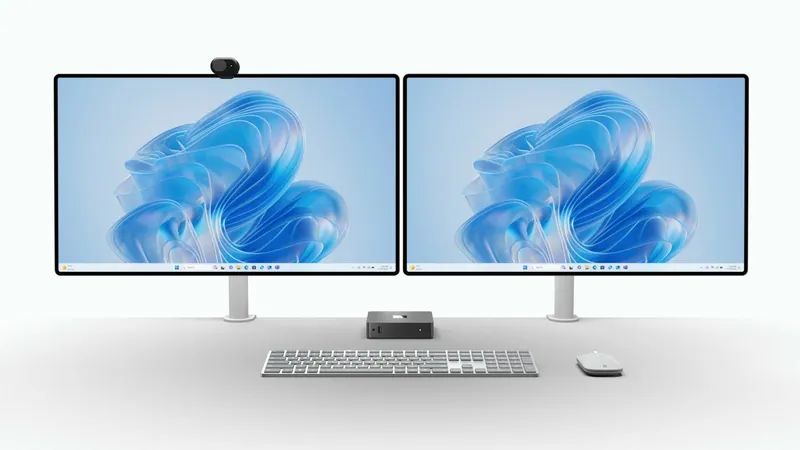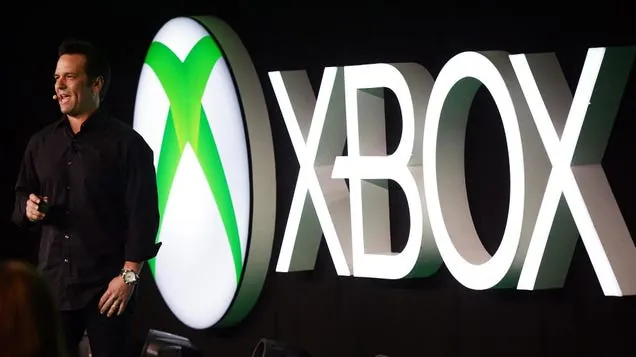
Microsoft Enters the Thin Client Arena with the Windows 365 Link – A Bold Move or an Expensive Misstep?
2024-11-19
Author: Noah
Introduction
Microsoft is shaking up the terminal landscape with the introduction of its latest device, the "Windows 365 Link," aimed exclusively at connecting to its cloud-based Windows 365 platform. Currently in its preview phase, the Windows 365 Link is designed as a fanless terminal that prioritizes cloud connectivity over traditional local computing—meaning it does not support any local applications or storage.
Device Specifications
While it does provide some local processing for applications such as WebEx and Teams to enhance user experience, it is clear that the primary purpose of the device is to serve as a gateway to a Microsoft desktop environment in the cloud. The specifications include a robust selection of ports: dual 4K monitor support, four USB ports, an audio port, Ethernet connectivity, as well as Wi-Fi 6E and Bluetooth 5.3 for seamless connectivity.
Price Considerations
One undeniable talking point is the device’s price—set at an MSRP of $349 when it becomes publicly available in April 2025. This figure raises eyebrows, especially considering that competitors like Dell offer similar devices, such as the OptiPlex 3000 Thin Client, for roughly $300. Additionally, Microsoft's Windows 365 Link doesn’t even carry the Surface branding, which could have added to its allure.
Cost of Windows 365 Subscription
A crucial question remains unanswered: does the price include a Windows 365 license? The cost for a Windows 365 subscription can soar up to $319 per user each month for access to a high-powered 16 vCPU Cloud PC, while more basic packages start at $32 per user. Furthermore, organizations can benefit from potential savings through the Windows Hybrid Benefit.
Microsoft's Experience in Lightweight Terminals
Microsoft is not new to the realm of lightweight terminals, having previously experimented with Media Center Extenders that allowed users to access Windows Media Centers. This latest hardware, however, signals a clear pivot towards catering to enterprise clients within the Microsoft ecosystem.
Sustainability Efforts
Intriguingly, the Windows 365 Link also aims to bolster Microsoft's sustainability efforts—boasting a construction of 90% post-consumer recycled aluminum alloy for its top shield and 100% pre-consumer recycled aluminum alloy for its base. According to Microsoft, the device is energy-efficient, consuming less power than many desktop setups configured with external monitors and peripherals linking to Windows 365.
Target Audience and Use Cases
Currently available for preview in various regions including Australia, Canada, Germany, Japan, New Zealand, the United Kingdom, and the United States, the Windows 365 Link poses an interesting dilemma for businesses. If a company is deeply integrated into the Microsoft ecosystem and aims to eliminate traditional laptops, this device could serve as a suitable desktop alternative—provided they remain tethered to the Windows 365 environment.
Limitations for Mobile Users
Yet, the appeal significantly wanes for users who prioritize mobility. The Windows 365 Link, while secure and manageable, does little beyond connecting to the cloud—a limiting factor that many organizations may find hard to justify at such a premium price point.
Conclusion
The fundamental question lingers: is the Windows 365 Link a necessary tool for modern businesses, or is it a costly solution that lacks the functionality and flexibility required in today’s rapidly evolving work environment? Only time will tell if Microsoft has hit the mark or missed the boat with this ambitious venture.









 Brasil (PT)
Brasil (PT)
 Canada (EN)
Canada (EN)
 Chile (ES)
Chile (ES)
 España (ES)
España (ES)
 France (FR)
France (FR)
 Hong Kong (EN)
Hong Kong (EN)
 Italia (IT)
Italia (IT)
 日本 (JA)
日本 (JA)
 Magyarország (HU)
Magyarország (HU)
 Norge (NO)
Norge (NO)
 Polska (PL)
Polska (PL)
 Schweiz (DE)
Schweiz (DE)
 Singapore (EN)
Singapore (EN)
 Sverige (SV)
Sverige (SV)
 Suomi (FI)
Suomi (FI)
 Türkiye (TR)
Türkiye (TR)